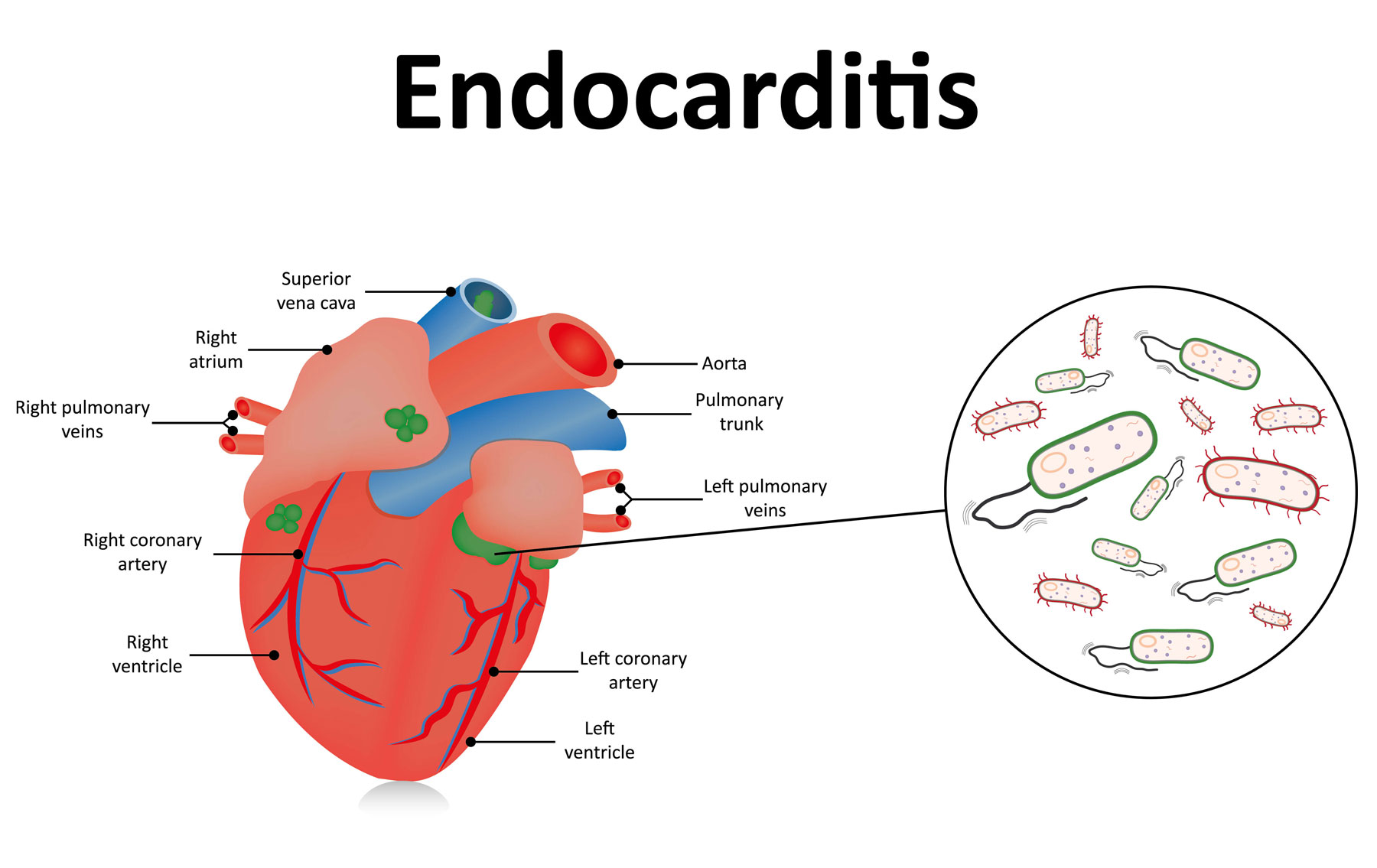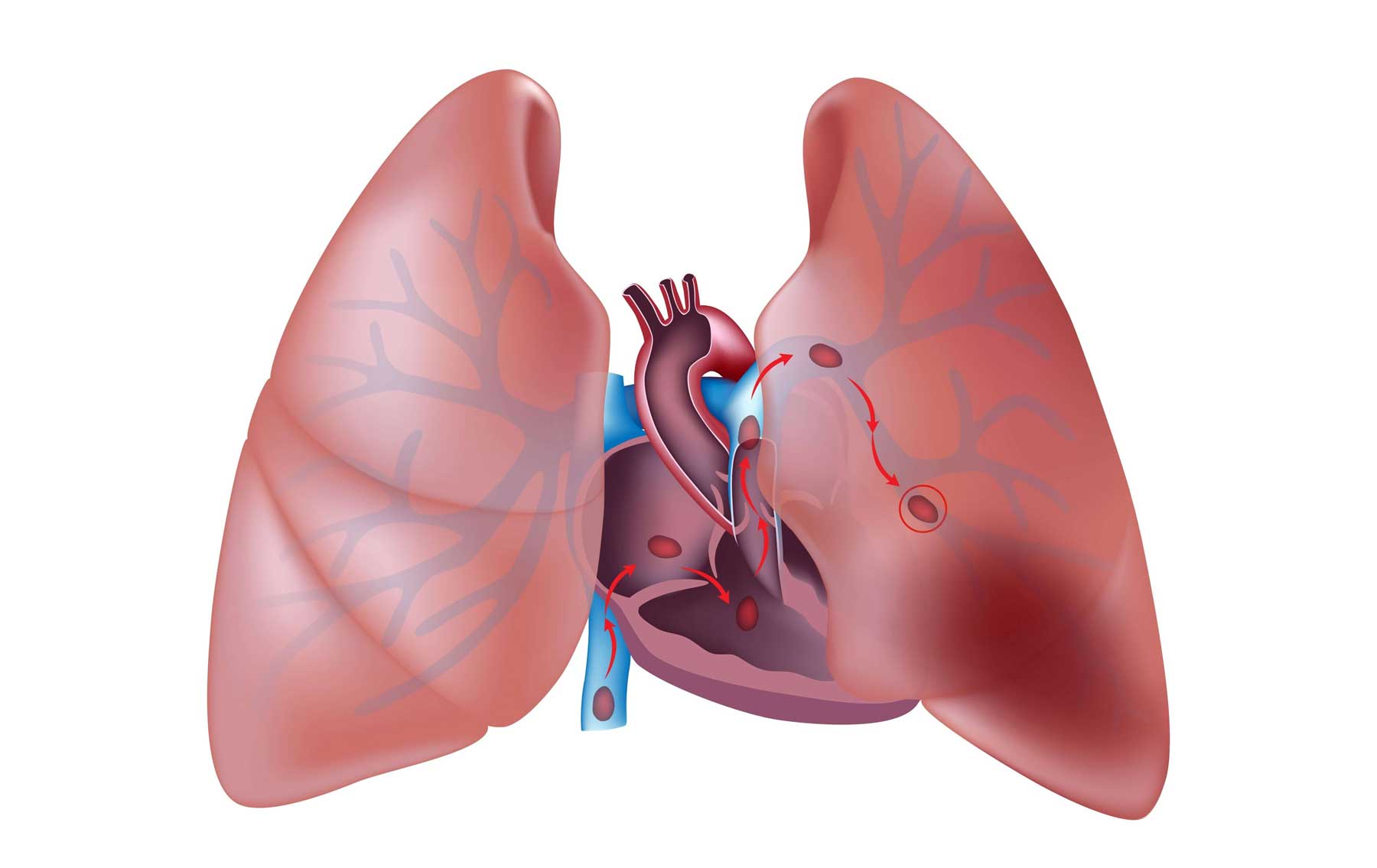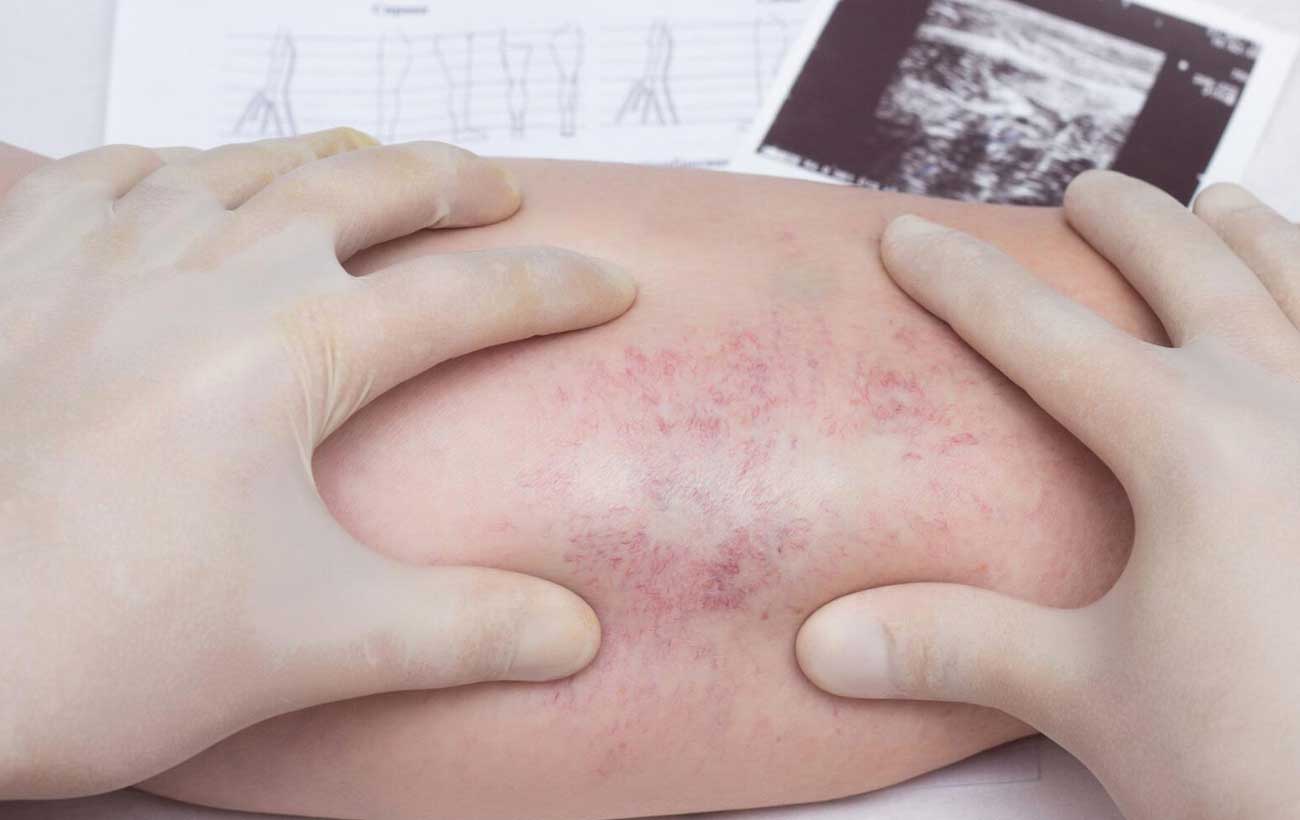Deep Vein Thrombosis Thrombosis is the formation of a blood clot (thrombus), which can partially…

Infective Endocarditis
The endocardium is the inner lining of the heart muscle and covering of the heart valves. If the endocardium is damaged, such as from mitral regurgitation, bacteria or other germs can infect the damaged area. As the microorganisms multiply, they cause more damage to the endocardium and may travel through the bloodstream to other parts of the body. The microorganisms can form infected blood clots that can lodge in small arteries and block blood flow. Gradually, the multiplying microorganisms cause severe damage to the heart valves, resulting in heart failure.
Most people who develop infective endocarditis have an underlying heart valve disorder, such as mitral valve prolapse or congenital (present at birth) lesions of the heart valves. Heart valve replacement surgery can sometimes lead to infective endocarditis. Bacteria also can enter the bloodstream during minor surgery, tooth extractions, teeth cleaning, endoscopy (an examination of the inside of the body using a viewing instrument), or by injecting illicit drugs with contaminated syringes or needles. To prevent infective endocarditis, people who have heart disease need to take antibiotics immediately before surgery or dental treatment or promptly after any skin infections develop. This precaution helps destroy any bacteria that might otherwise enter the bloodstream and cause infective endocarditis.
Symptoms
A person with infective endocarditis usually has a fever of less than 102°F. Other possible symptoms include sudden chills (especially after the bacteria have spread through the bloodstream), headaches, aching joints, fatigue, and loss of appetite. If the heart valves are affected, symptoms of heart failure may occur eventually.
If blood clots form, symptoms depend on their location. For example, if clots form in the hands or feet, you may have painful lumps in the tips of your fingers or toes, or small bruises behind your nails. A clot that lodges in the brain can cause a stroke. Clots from bacterial endocarditis can lodge anywhere in the body, sometimes causing small abscesses (pus-filled cavities surrounded by inflamed tissue) to form. Bacterial endocarditis can also cause anemia or kidney disease, both of which usually clear up after the infection is treated successfully. If you have any of the symptoms described above, see your doctor as soon as possible.
Treatments
To treat infective endocarditis, a doctor will prescribe an antibiotic to fight the microorganism that is causing the infection. If bacterial endocarditis is diagnosed and treated effectively within 6 weeks of infection, there is a 90 percent chance of eliminating the infection. Long-term effects depend on the valve that is damaged and the severity of the damage.



